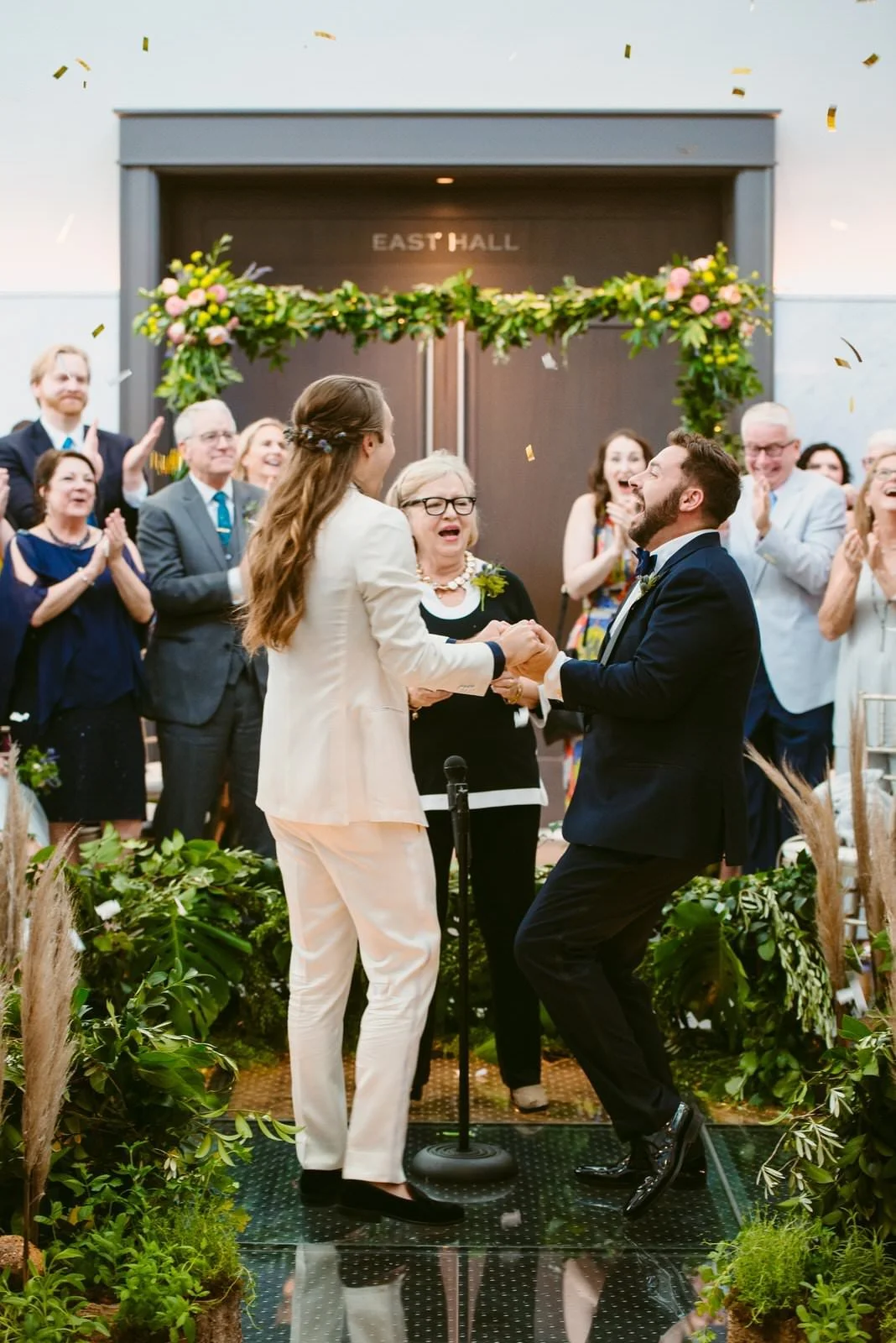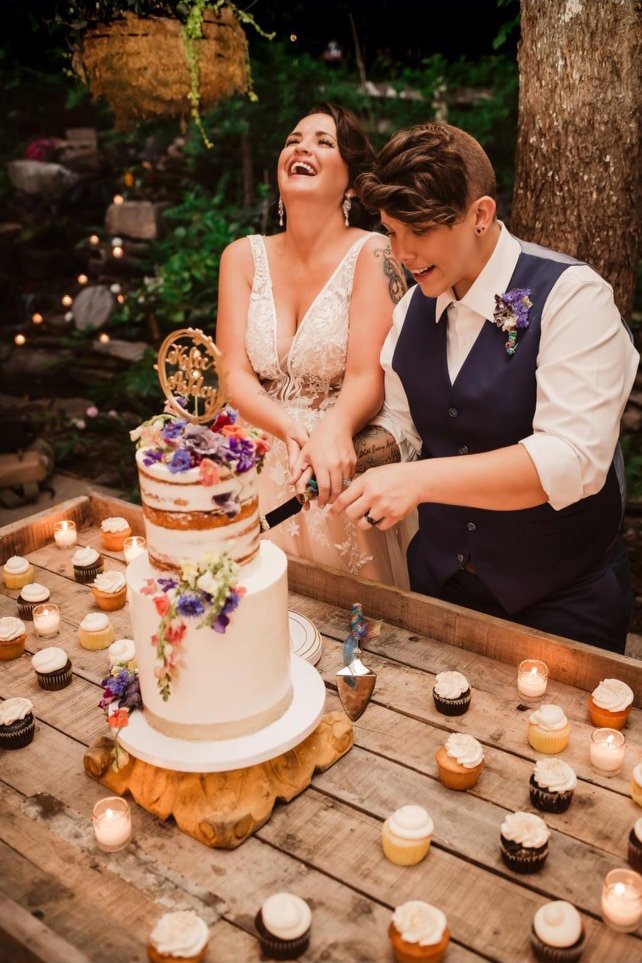Why Using Gender-Inclusive Language is Essential for Wedding Vendors
What’s gender-neutral or gender-inclusive language and what’s its purpose?
One of our main goals as wedding vendors is to provide an exceptional experience for all of our couples — as well as their friends and family! Using gender-inclusive language is a quick and easy way to do just that.
Gender-neutral language is used to avoid words that imply that one gender is the “norm” or the gender that is expected. By using gender-inclusive language you can not only avoid discriminating against your clients and their guests, but you can also make sure that everyone involved feels seen and respected!
Photo by Sarah Katherine Davis Photography
I don’t understand why gendered language is a problem. Can you explain further?
We see a lot of marketing aimed at brides. This is great for those who fall into this category, but it can be discouraging for trans & non-binary folks, couples who don’t have a bride, and even for straight couples who have a groom doing more of the wedding planning. Assuming that a bride is always involved or is always the one leading planning can make those other folks feel overlooked and discouraged.
Imagine this: a Queer couple falls in love with your work, know you are open to working with LGBTQ+ couples, and can’t wait to book you. Then, when you send over your contract they see two categories: “bride” or “groom.” It’s a gut punch— an indicator that you aren’t as LGBTQ+ friendly as they thought. It lets them know that you didn’t consider them or that you think of them as an outlier. You’re part of Inclusive Kentucky Weddings precisely to help couples avoid feeling like this— so make sure your language is inclusive!
Okay, I totally get it now. How do I start implementing gender-inclusive language and what should I look out for?
You’ll want to review your website, contracts, email templates, listings in directories, social media, and any other locations where you have text to make sure you’re speaking in an inclusive way. You’ll want to look for some obvious things— like making sure you aren’t assuming there is a bride & groom in every couple, but you’ll also want to look for more subtle things as well. You should avoid making assumptions in any way about someone’s gender or sexual identity or imposing expectations based on either of those things. If you’re feeling overwhelmed, we offer an inclusivity audit for wedding vendors to review everything for you!
Can you give some examples of common wedding terms to avoid and what they can be replaced with?
Instead of bride and groom, you can say marriers, partners, spouses, celebrants, or couple. All of those terms outside of “couple” can also be used for just one person by dropping the s—or simply using someone’s name is always a great option as well. In contracts you can use client 1 & 2, party a & b, partner 1 & 2, or any other neutral term that works for you.
When talking about the wedding party, you can call them attendants, the wedding party, or “so and so’s side” of the wedding party if you need to be specific or break things up. If you’re a photographer giving direction, try “if you’re wearing a suit make sure your top button is buttoned” or “if you have a bouquet make sure to keep it low” instead of using gendered language to pose groups.
For DJs, you’ll want to avoid “ladies and gentlemen” and instead try something like esteemed guests, friends, everybody, distinguished guests, etc. Both DJs and coordinators can ask about special dances or parents dances instead of assuming who will be sharing dances. It’s good to avoid games, questions, or jokes that reinforce gender stereotypes— I’ve personally heard guests at multiple weddings complaining about how uncomfortable it was afterwards. Going around to ask about the secret to a long marriage after the anniversary dance can be cute and fun. Harassing men about how long they have been married and expecting them not to know…there are a lot of levels to why this isn’t cool. When in doubt just ask your couple what they want!



